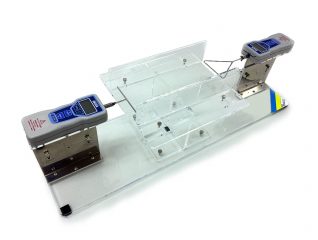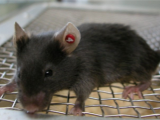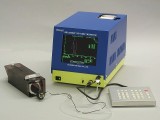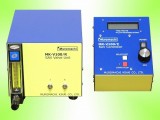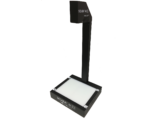Measure grip strength based on the OECD methodology
MK-380CM/R has been designed for the grip strength test of both fore and hind limbs based on the method of Meyer et al. (1979) which is specified as the grip strength test method in “OECD Environment, Health and Safety Publications Series on Testing and Assessment No. 43”, which provides guidance on mammalian reproductive toxicity testing and assessment.
MK-380Si has been designed to measure grip strength of both front and hind limbs of rats and mice, which can easily detect the peak force by allowing them to grasp and pull the forelimb grid assembly. Accurate measurement is achieved with the built-in high-end transducer. A RS 232 port is provided to allow transfer of data to a PC.
SPECIFICATIONS
| Material | Clear acrylic, polyvinyl chloride and aluminum |
| Display | LCD 4 digits, Peak or Continuous Value |
| Detector | Transducer |
| Detection Range | 5 kg, 50 N |
| Readability | 0.001 kg, 0.01 N |
| Grip for Front Limb | Stainless Steel |
| Grip for Hind Limb | Stainless Steel |
| Power | 100-240V AC Rechargeable |
| Instrument Dimensions | W230 x D810 x H240 mm |
| Weight | Approx. 6 kg |
Specifications are subject to change without notice.
Standard System Include:
- Push-Pull Gauge – 2
- Height-Adjustable Stand – 1
- Base Plate – 1
- Acrylic Plate with 2 Side Walls – 1
- OECD Fore and Hindlimb Bars for Rats -1
- OECD Fore and Hindlimb Bars for Mice -1
- Fore and Hindlimb Grids for Rats -1
- Fore and Hindlimb Grids for Mice -1
- DCS-380CM/R Data Collection Software – 1
- RS232C Cable – 2
- USB-Serial Cable – 2
REFERENCES
METHOD
- OECD (2008). Guidance Document on Mammalian Reproductive Toxicity Testing and Assessment. Environment, Health and Safety Publications Series on Testing and Assessment (No.43), Organisation for Economic Cooperation and Development, Paris.
- Meyer, O. A., Tilson, H. A., Byrd, W. C., & Riley, M. T. (1979). A method for the routine assessment of fore- and hindlimb grip strength of rats and mice. Neurobehav Toxicol, 1(3), 233-236.

